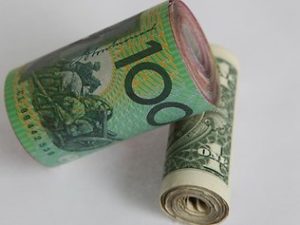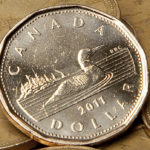 Australian dollar traded lower against its US counterpart on Tuesday, after the minutes of Reserve Bank of Australias (RBA) most recent policy meeting showed that the bank was not excluding the possibility of further reducing borrowing costs.
Australian dollar traded lower against its US counterpart on Tuesday, after the minutes of Reserve Bank of Australias (RBA) most recent policy meeting showed that the bank was not excluding the possibility of further reducing borrowing costs.
AUD/USD fell to a daily low at 0.8930 at 3:25 GMT, after which consolidation followed at 0.8944, dipping 0.03% for the day. Support was likely to be found at December 13th low and the lowest point since August 30th, 0.8910, while resistance was to be encountered at December 16th high, 0.8970.
“The Boards judgment remained that, given the substantial degree of policy stimulus that had been imparted, it was prudent to hold the cash rate steady while continuing to gauge the effects of earlier reductions, but not to close off the possibility of reducing it further should that be appropriate to support sustainable growth in economic activity, consistent with the inflation target”, the minutes of RBAs policy meeting on December 3rd revealed today.
Minutes release came after Reserve Bank of Australia Governor Glenn Stevens said last week, that “it’s probably more preferable” to support Australian economy with a weaker currency than with further rate cuts. An exchange rate of 85 U.S. cents was “closer to the mark” than 95 cents, he also said in an interview with the Australian Financial Review. Stevens is expected to testify at a parliamentary economics committee tomorrow.
Traders saw a 16% probability that the central bank might reduce its benchmark interest rate from the current record low level of 2.50% at the next policy meeting scheduled in February.
At the same time, Australian bonds declined after the government said the the budget deficit will increase to 47 billion AUD (42 billion USD) during the year through June. A projection in August pointed a deficit at the amount of 30.1 billion AUD, according to the government’s mid-year economic forecast released today. Australian Prime Minister Tony Abbott said in Sydney on Tuesday that the nation faces a decade of budget deficits, according to Bloomberg. The yield on Australian 10-year government bonds climbed six basis points, or 0.06 percentage point, to reach 4.29%.
The Conference Board said that its Leading index for Australia, an indicator used to forecast nations economic growth in a short-term and intermediate-term, advanced 0.5% in October.
In addition, sales of new automobiles in the country, which are indicative of consumer sentiment, rose 1.8% in November compared to a month ago, after in October sales decreased 0.7%. On annual basis however, new auto sales dropped 0.5% in November, following a 3.2% drop in the preceding month. An increase in demand for expensive durable goods usually suggests that consumers are more confident about their future financial prospects and are willing to spend more.
Meanwhile, yesterday Markit Economics reported that the preliminary value of its manufacturing PMI for the United States slowed down to a seasonally adjusted 54.4 in December from a final reading of 54.7 in November. Analysts’ forecasts pointed that the index will advance to a reading of 54.9 during the current month. Values above the key level of 50.0 are usually considered as an indication that activity in the sector has expanded.
The US dollar, however, received support after US industrial production registered a larger than projected increase in November, with the corresponding index advancing 1.1%, compared to a 0.1% increase in October. Experts had expected a 0.1% increase this month.
The Federal Reserve may begin to scale back its $85-billion-USD monthly asset purchases at the committee’s policy meeting on December 17th-18th, rather than wait until January or March, according to 34% of economists who participated in a Bloomberg survey on December 6th. In a survey a month ago 17% of respondents projected that a tapering may occur in December.
Elsewhere, the Aussie was lower against the euro, with EUR/AUD cross up 0.26% on a daily basis to trade at 1.5424 at 8:06 GMT. AUD/NZD pair was losing 0.23% to trade at 1.0813 at 8:07 GMT, after falling to 1.0786, the pairs lowest point since October 2008.





